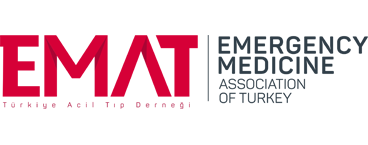Effects of Particulate Air Pollution on Emergency Department Visits for Headache as Chief Complaint
Murat Özsaraç1, Hatice Uluer2, Murat Ersel1, Selahattin Kıyan1, Aslihan Yürüktümen1, Eylem Ersan1
1Departments Of 1emergency Medicine, Izmir, Turkey.
2Departments Of Biostatistics And Medical Informatics, Ege University Hospital, Izmir, Turkey.
Keywords: Air pollution, emergency department visit; headache
Abstract
Objective: Particulate air pollution is a mixture of solid, liquid, or solid and liquid particles suspended in the air. There have been abundant studies on the short-term effects of air pollution on health, with emphasis on mortality and hospital admissions. Here we propose to assess the relationship between ambient air pollution, and monthly emergency department (ED) visits for headache. In the present study, the objective was to examine the relationship between monthly ED visits for headache and selected particulate air pollution factors.
Methods: This was a retrospective study of 257 ED visits for headache (ICD-10: G43 and G44) recorded at Ege University hospital between June 2008 and May 2009 (12 month). Measured air pollutants included sulfur dioxide (SD), suspended particulate matter (PM), and carbon monoxide (CO). Conditional logistic regression was used to estimate the effects of particulate air pollution factors.
Results: We found no association between outdoor measures of carbon monoxide, sulfur dioxide and headache visits to ED. Statistically significant positive associations were observed between the number of ED visits for headache and the suspended particulate matter (PM10), (p=0.008 Spearman’s rho).
Conclusion: An increase in levels of pm10 is associated with an increase in the number of ED visits for headache. Presented findings verify that ED visits for headache are correlated to particulate air pollution.

